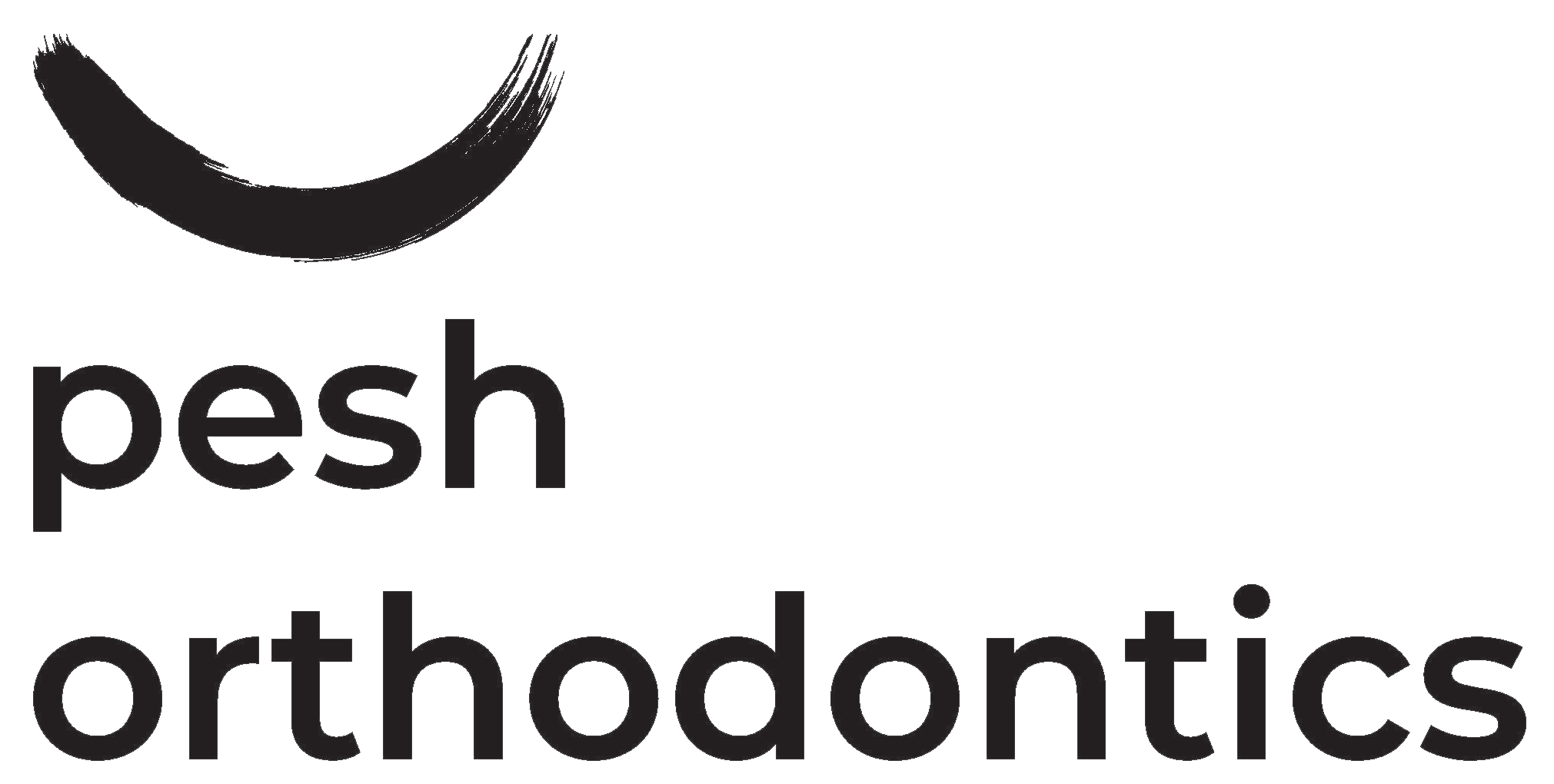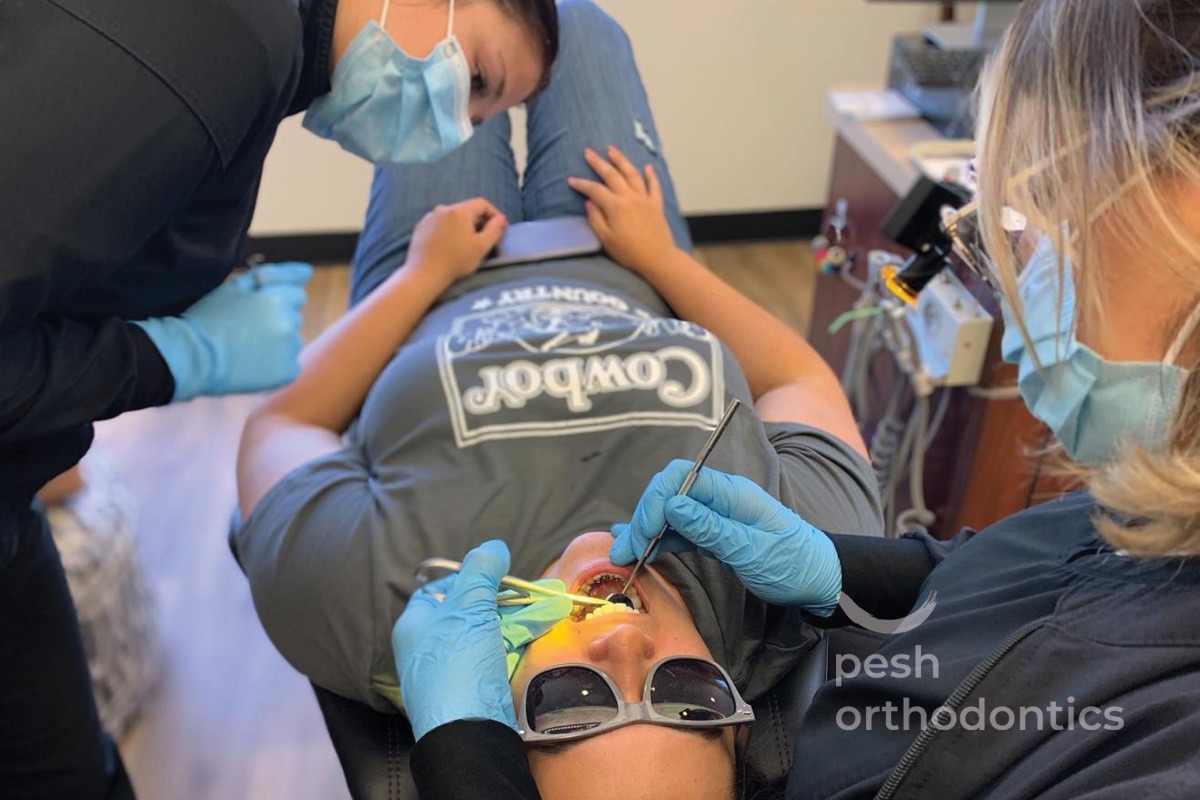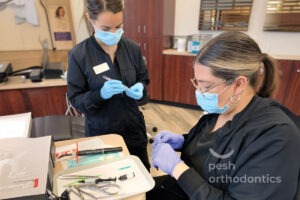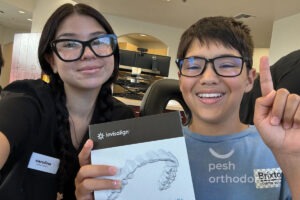Embarking on the journey to a perfect smile with orthodontic treatment is an exciting step, but it’s not without its challenges. If you’re in the midst of treatment, you might be experiencing some discomfort, and I get it—I’ve seen countless patients navigate these same waters. Whether it’s the soreness from newly adjusted braces or the irritation from aligners, managing discomfort is a common part of the process. Here at Pesh Orthodontics in Southwest Riverside County, we’re committed to making your orthodontic experience as smooth and comfortable as possible. In this post, I’ll share practical tips and personal insights to help you manage any discomfort you might face, ensuring that your path to a beautiful, healthy smile is as comfortable as it can be.
Understanding Orthodontic Discomfort
Discomfort is a normal part of orthodontic treatment, but understanding why it happens can help you manage it better. Essentially, the discomfort stems from the pressure applied to your teeth by braces or aligners, which is necessary to guide them into their new positions. This pressure can cause soreness in your teeth and gums, especially right after adjustments or when starting with a new set of aligners.
I’ve been through this myself, and I know it’s no picnic. That soreness you’re feeling is a sign that your treatment is working. It’s your teeth responding to the gentle, continuous force being applied. When I had braces, I experienced that same initial soreness, especially after an adjustment. It’s a temporary discomfort, usually lasting a few days, but it’s a crucial part of the process that leads to a beautifully aligned smile.
By understanding the source and nature of this discomfort, you can better anticipate and manage it. Remember, the pain is temporary, but the results will last a lifetime. In the following sections, I’ll provide you with practical tips and strategies to help you find relief and stay comfortable throughout your treatment.
Immediate Relief Strategies
When discomfort strikes, having a couple of immediate relief strategies on hand can make a significant difference. Here are some tried-and-true methods to help you manage the pain and get back to your day with minimal disruption:
Over-the-Counter Pain Relief
One of the simplest and most effective ways to alleviate orthodontic discomfort is by using over-the-counter pain medications such as ibuprofen or acetaminophen. These medications can help reduce inflammation and provide relief from soreness. Always follow the recommended dosage instructions, and consult with your orthodontist if you have any concerns about taking these medications.
Rinsing with Warm Salt Water
A warm salt water rinse is a simple yet effective way to ease soreness and keep your mouth clean. Mix a teaspoon of salt into a glass of warm water and swish it around your mouth for about 30 seconds before spitting it out. This can help reduce inflammation and promote healing, offering relief from the discomfort caused by braces or aligners.
These immediate relief strategies can help you manage pain as it arises, making it easier to cope with the day-to-day challenges of orthodontic treatment. Remember, the discomfort is temporary, and these methods can provide the quick relief you need to stay comfortable and focused on the positive changes happening in your smile.
Long-term Comfort Tips
While immediate relief is essential, incorporating some long-term strategies into your routine can help manage discomfort throughout your orthodontic treatment. These tips are designed to provide sustained comfort and prevent issues before they start.
Eating Softer Foods
During the most uncomfortable periods, like right after an adjustment or when starting with new aligners, sticking to soft foods can make a big difference. Foods like yogurt, mashed potatoes, smoothies, scrambled eggs, and soups are gentle on your teeth and gums. Avoid hard, crunchy, or sticky foods that can exacerbate soreness or even damage your braces.
Orthodontic Wax Application
Orthodontic wax is a lifesaver when it comes to preventing irritation caused by braces. Applying wax over the brackets and wires that are rubbing against your cheeks, lips, or gums can create a smooth barrier, reducing friction and preventing sores. Simply take a small piece of wax, warm it between your fingers, and press it onto the problematic area. You’ll notice a significant reduction in discomfort almost immediately.
Maintaining Good Oral Hygiene
Good oral hygiene is crucial for preventing additional discomfort and ensuring a healthy treatment process. Use a soft-bristle toothbrush and brush gently around the braces or aligners. Pay special attention to areas that are particularly sore. Flossing is equally important, though it may be challenging with braces—consider using floss threaders or interdental brushes to clean between your teeth effectively. Additionally, rinsing with an antiseptic mouthwash can help keep your mouth clean and reduce the risk of infections that could cause further discomfort.
By adopting these long-term comfort tips, you can make your orthodontic journey smoother and more manageable. Remember, while the process may have its challenges, each step brings you closer to a beautifully aligned smile. Stay patient and proactive, and you’ll find that these discomforts are just temporary bumps on the road to achieving your goal.
Oral Hygiene Practices
Maintaining excellent oral hygiene is crucial during orthodontic treatment, not just for your overall dental health, but also to minimize discomfort and prevent complications. Here are some effective practices to keep your mouth clean and comfortable:
Gentle Brushing Techniques
Brushing your teeth can be more challenging with braces, but it’s essential to do it thoroughly and gently. Use a soft-bristle toothbrush to avoid aggravating sore areas. Angle the brush to clean around the brackets and along the gumline effectively. An electric toothbrush with a special orthodontic head can also be a great investment, as it can make brushing easier and more efficient.
Flossing and Mouthwash
Flossing is vital to remove food particles and plaque from between your teeth and around the braces. Using a floss threader or orthodontic floss can help navigate around the brackets and wires. Interdental brushes are another excellent tool to clean those hard-to-reach areas. Follow up with an antiseptic mouthwash to kill bacteria and keep your mouth feeling fresh. This can help prevent gum inflammation and infections that might cause additional discomfort.
Hydration and Rinsing
Staying hydrated is important for maintaining good oral health and reducing discomfort. Drinking plenty of water helps wash away food particles and keeps your mouth moist, which can prevent dryness and irritation. Additionally, rinsing your mouth with water after meals can help remove any debris that might get stuck in your braces, reducing the risk of irritation and soreness.
Avoiding Problematic Foods
Certain foods can exacerbate discomfort or even damage your braces. Steer clear of hard, crunchy foods like nuts, popcorn, and raw vegetables, as well as sticky or chewy foods like caramel and chewing gum. These can get stuck in your braces or cause brackets and wires to come loose, leading to additional pain and potential setbacks in your treatment.
By incorporating these oral hygiene practices into your daily routine, you can significantly reduce discomfort and maintain a healthy mouth throughout your orthodontic treatment. Good hygiene not only helps in managing pain but also ensures that your journey to a perfect smile is as smooth and trouble-free as possible. Remember, each small effort contributes to the big picture of achieving a healthy, beautiful smile.
Regular Orthodontic Check-Ups
Attending regular orthodontic check-ups is essential for managing discomfort and ensuring the success of your treatment. These appointments allow your orthodontist to monitor your progress, make necessary adjustments, and address any issues that may arise. Here’s why these check-ups are so important and how they can help you stay comfortable throughout your treatment:
Importance of Scheduled Appointments
Regular appointments are crucial for several reasons. First, they ensure that your braces or aligners are working effectively and that your teeth are moving as planned. Adjustments made during these visits are necessary to continue guiding your teeth into their correct positions. Second, these check-ups allow your orthodontist to identify and address any potential problems early on, such as loose brackets, broken wires, or any signs of oral health issues that could cause discomfort or delay your treatment.
Communication with Your Orthodontist
Open communication with your orthodontist is key to managing discomfort. Always inform your orthodontist about any pain or issues you’re experiencing. They can make specific adjustments to alleviate discomfort, provide additional relief options, and give you tailored advice on managing pain between visits. For instance, if a particular wire is causing irritation, your orthodontist can trim it or reposition it to reduce discomfort.
Adjustments and Follow-Up Care
During your check-ups, your orthodontist may make adjustments to your braces or provide new sets of aligners. These adjustments can cause temporary soreness, but they are necessary for the treatment’s progress. Your orthodontist might also provide wax, recommend specific pain relief strategies, or give you tips on how to care for your braces or aligners. Following their advice and instructions carefully can help minimize discomfort and keep your treatment on track.
Monitoring Oral Health
Regular check-ups also allow your orthodontist to monitor your overall oral health. They can identify issues such as cavities, gum disease, or plaque buildup that could cause additional pain or complications if left untreated. By addressing these issues promptly, your orthodontist helps ensure that your treatment progresses smoothly and comfortably.
By prioritizing your regular orthodontic check-ups and maintaining open communication with your orthodontist, you can effectively manage discomfort and make your orthodontic journey as pleasant as possible. Remember, these appointments are designed to support you and ensure that each step brings you closer to achieving a healthy, beautiful smile.
Managing Specific Discomforts
Orthodontic treatment can cause various types of discomfort, each requiring a different approach for effective management. Here, we’ll address some common specific discomforts and how to alleviate them:
Sore Teeth and Gums
After an adjustment or when starting with a new set of aligners, it’s normal to experience sore teeth and gums. This soreness is due to the pressure applied to your teeth to move them into the correct positions. While this is a sign that your treatment is progressing, it can be quite uncomfortable. To manage this:
- Over-the-Counter Pain Relief: Taking pain relievers like ibuprofen or acetaminophen can help reduce inflammation and pain.
- Soft Foods: Stick to a diet of soft foods during peak soreness. Foods like mashed potatoes, yogurt, smoothies, and soup are easy on your teeth and gums.
- Cold Compress: Applying a cold compress to your cheeks can reduce swelling and numb the pain.
Irritation from Braces
Braces can sometimes irritate the inside of your cheeks, lips, and gums, especially if there are any protruding wires or brackets. To alleviate this:
- Orthodontic Wax: Apply orthodontic wax over any brackets or wires that are causing irritation. This creates a smooth barrier, reducing friction and preventing sores.
- Silicone Pads: Similar to wax, silicone pads can cover larger areas and provide relief from irritation.
- Salt Water Rinse: Rinsing with warm salt water can soothe irritated areas and promote healing. Mix a teaspoon of salt in a glass of warm water and swish it around your mouth for about 30 seconds.
Jaw Pain
Wearing orthodontic appliances, such as braces or aligners, can sometimes lead to jaw pain due to the pressure exerted on your teeth and jawbone. To manage jaw pain:
- Gentle Jaw Exercises: Performing gentle jaw exercises can help relieve tension and improve mobility. Your orthodontist can recommend specific exercises tailored to your needs.
- Warm Compress: Applying a warm compress to your jaw can relax the muscles and reduce pain.
- Pain Relief: Over-the-counter pain medications can also be effective in managing jaw pain.
Mouth Sores
Braces or aligners can sometimes cause mouth sores, particularly in the early stages of treatment. To manage mouth sores:
- Mouth Rinse: Use a mouth rinse designed for sores to reduce pain and speed up healing.
- Avoid Spicy Foods: Spicy and acidic foods can exacerbate mouth sores. Stick to bland, soft foods until the sores heal.
- Topical Treatments: Apply topical treatments recommended by your orthodontist to numb the area and promote healing.
By understanding and addressing these specific discomforts, you can significantly improve your orthodontic experience. Remember, these discomforts are usually temporary and manageable. If any pain becomes severe or persists, don’t hesitate to contact your orthodontist for personalized advice and solutions.
Emotional and Mental Well-being
Orthodontic treatment can take a toll not just on your physical comfort, but also on your emotional and mental well-being. It’s natural to feel overwhelmed or frustrated at times, but remember, you’re not alone in this journey. Here’s some guidance on how to navigate the emotional aspects of orthodontic treatment:
Encouragement: I want to remind you that the discomfort you’re experiencing is temporary, but the results are long-lasting and absolutely worth it. Every adjustment brings you one step closer to that beautiful, healthy smile you’ve been dreaming of. So hang in there, because you’re doing great!
Support systems: Don’t hesitate to lean on your support network during this time. Whether it’s your friends, family, or our orthodontic team, there are people who care about you and want to see you succeed. Share your concerns, seek advice, or simply vent if you need to – we’re here to listen and support you in any way we can.
Remember, your emotional well-being is just as important as your physical comfort during orthodontic treatment. By staying positive and reaching out for support when you need it, you’ll not only make the journey easier for yourself but also set yourself up for success in the long run. You’ve got this!
Conclusion
Managing discomfort during orthodontic treatment is no easy feat, but it’s entirely possible with the right strategies and mindset. I hope the tips and advice provided in this guide have been helpful to you in easing your discomfort and navigating the emotional challenges that may arise.
Always remember, the journey to a perfect smile may have its ups and downs, but the end result is truly worth it. Your dedication and perseverance will pay off in the form of a beautiful, healthy smile that you can be proud of for years to come.
If you ever have any concerns or need more personalized advice, don’t hesitate to reach out to our office. We’re here to support you every step of the way and ensure that your orthodontic experience is as comfortable and rewarding as possible. Keep smiling, and remember that we’re cheering you on towards your orthodontic goals!














